In the world of Harry Potter, Hermione Granger’s favourite subject is Arithmancy – A subject that involves the magical properties of numbers. In ancient India Anka Shastra had a close relation with Astrology & Mathematics. Anka Shastra talked about how numbers and their associated planets influenced human behaviour.
To a layman, Anka Shastra & Arithmancy is known as Numerology. According to numerologists, everything in the world is dependent on numerical patterns – These patterns come from the numbers’ inherent vibrations. While the significance of numbers has been profound since Vedic times in India, most numerologists credit the Greek philosopher Pythagoras as the founder of numerology. He and his followers became interested in the mystical properties of numbers after discovering that Pythagoreans became interested in number mysticism after discovering that if you add up a series of odd numbers beginning with the No 1, the result is always a square number.
They also described numbers in terms of non-numerical traits. These traits had more to do with intuition and mysticism than science or mathematics. For example, odd numbers are masculine and even numbers are feminine. Two represents duality and is female, while three is male. As the sum of two and three, five represents marriage, and since it falls exactly in the middle of the numbers one through nine, it also represents justice.
How do you find your numerology number?
If your apartment number is C 104 – then it adds up to 1 + 4 + 3 = 8
The Romans created the Roman numerals, using the Roman alphabet. The Hindu – Arabic numeral system became the most common system used around the world to represent numbers. It is considered the most effective because of the symbol “zero”. Moreover, you can write the numbers in numerals, such as 1, 2, 3, 4, 5, or words, like six, seven, eight, nine, and ten.
Number Zero
Zero is Nothing & Everything. Zero helps us understand and explain concepts that do not have physical forms.The number zero is used as a placeholder. It is the fulcrum that separates Positive numbers from Negative numbers. So it is at the centre – it is the Core.
Numbers were known to the ancient Indians since time immemorial. The science of Anka Shastra & Astronomy is one of the Upa Vedas. The Vedas are timeless and are considered to have originated from the breath of God. The last section of Chamakam – a part of the ancient mantra Rudram from the Yajur Veda is dedicated to numbers from 1- 33 and then from 4 – 48.
Aryabhatta is credited for using zero in the decimal system and introducing zero in mathematics. Brahmagupta, an astronomer and mathematician from India used zero in mathematical operations like addition and subtraction. Aryabhatta introduced zero in 5th century and Brahmagupta introduced zero in calculations in around 628 AD. This was then adopted by the Arab traders and found its way to Europe.
“The Indian system of counting has been the most successful intellectual innovation ever made on our planet,” John Barrow, an English mathematician, in his book, Pi in the Sky
Brahmi numerals – Ancestors of Hindu Arabic numerals
Europeans resisted Hindu-Arabic numerals. The numerals, including zero, were not accepted. Florence – Italy, passed a law prohibiting the use of the numerals. Slowly, the numbers became accepted in 1500s. Leonardo of Pisa, known as Fibonacci , born to a merchant family living in North Africa learned Hindu-Arabic numerals from his Arabic tutors . He brought the news of zero and new computational methods to Europe.
Zero was called ‘Shunya’ in India, it was called ‘Sifr’ in the middle east, when it reached Italy, it was named ‘Zefero’ and later in English, it was called ‘Zero’.
The concept of Zero – Nothingness, is core to Spirituality in many religions. The Void, Emptiness is the source from which all answers emerge. In Hinduism it is called “Shunya“.
Zero Hour in Parliament, Zero Based budgeting, Absolute Zero – there are many such reference to Zero in our daily life.
Ekam Sarvam – Number One
Many consider it as the source or the beginning – hence associated with God. All numbers are created by adding 1 – so it is the Origin. All spiritual roads lead to the ultimate Truth – Brahman, Consciousness , God – which is ONE. Indivisible.
People associated with #1 have the following traits. Strong individuality, masculinity, likes to be in control, authoritative, bright, freedom loving, intelligent, able-bodied, prefers luxuries and comforts of a good life. It is also a lonely number. In Hindu traditions #1 is associated with the Sun.
Number Two

The digit used to represent the number 2 traces its roots back to the Indic Brahmic script, where “2” was written as two horizontal lines. Modern Chinese & Japanese languages (and Korean Hanja0) still use this method. During the Gupta period they rotated the two lines 45 degrees, making them diagonal. The top line was sometimes also shortened and had its bottom end curve towards the centre of the bottom line. In the Nagari script, the top line was written more like a curve connecting to the bottom line. In the Arabic Ghubar writing, the bottom line was completely vertical, and the digit looked like a dotless closing question mark. Restoring the bottom line to its original horizontal position, but keeping the top line as a curve that connects to the bottom line leads to our modern digit.
Number 2 has different meanings in various cultures. In Chinese culture, it’s associated with balance, harmony, and the concept of yin and yang. Yin and yang represent the interconnectedness of all things and the need for balance in all areas of our lives. In Hinduism, it represents duality and the balance between masculine and feminine energies. In numerology, it’s considered a powerful number that represents balance and cooperation.
Regardless of the culture, the number 2 is a symbol of balance and harmony. It reminds us that we need to create balance in our lives to achieve happiness and fulfillment. When we are in balance, we are more productive, creative, and able to handle stress and challenges with ease.
The reigning deity for Number 2 in Hinduism is Moon or Chandra Navagraha. People associated with this number are gentle, passive, artistic, but more geared to thought than action. They have charm and powers of intuition. Its negative attributes are lac of self-confidence and physical strength.
Number Three
Most people believe in the adage that “all good things come in threes”.
The number 3 has always held powerful symbolism. The Trinity, Brahma – Vishnu – Shiva, Three worlds, Birth – Life – Death, Mind -Body – Soul connection, The 3 Gunas, The 3 main channel of consciousness – Ida, Pingala & Sushumna, the 3 sections of an essay, 3 Little Pigs, 3 Musketeers, 3 Golliwogs. A Tripod has 3 legs for perfect balance, Breakfast – lunch – dinner are the 3 meals of the day, there are 3 states of matter….. Number 3 is beautiful and complete.
Two Points form a line, 3 points create an enclosed space with a Triangle. Trigonometry is born from there – the science of 3 angles. The best communicators always focus on 3 points. However, the Japanese and the Vietnamese avoid taking photos if there are only 3 people because of an old superstition that death will come to whoever is in the middle of the photo.
In numerology, the number 3 is linked to Jupiter, the planet of joy, abundance, success, good fortune, and wisdom. This connection reinforces the connection between 3 and positive traits like being optimistic, lucky, adventurous, ambitious, passionate, clever, knowing, and worldly.
Number Four
There are 4 directions and 4 dimensions – Length , breath, depth & time. The most popular and efficient automobile engines are 4 stroke engines.
The Chinese consider number four an unlucky number since its Chinese pronunciation sounds like the Chinese term for ”death.” Therefore, buildings in China do not have a fourth floor. In the buildings’ elevators, number 4 is not included. Instead, they use the letter F. The same belief is true in Japan and South Korea and other Asian countries where Chinese is spoken. But the belief is not applicable to Germany where the number is considered lucky, because it is associated with the ”four-leaf clover” which is a symbol for luck.
In many countries around the world, including developed countries such as Norway, Sweden, Portugal, and the UK, the number 13 (1 + 3 = 4) is considered an unlucky number.
Did you know that the fear or avoidance of the number 13 is called triskaidekaphobia?
The Mayan calendar ended with the 13th Baktun, which was believed to bring the apocalypse in 2012. Tall buildings use different methods to name the 13th floor. The fear extends to manufacturers and companies. People avoid having 13 guests to their party or event and Friday the 13th for many is very unlucky.
There is no acceptable proof that the number 13 is unlucky, but it remains a sign of bad luck due to traditional beliefs. For example, in The Last Supper, the 12 apostles were gathered around Jesus, thus there were 13 people around the table. Judas Iscariot betrayed Jesus.
The members of the Knights Templar were ordered arrested by King Philip IV of France on October 13, 1307, which fell on a Friday. A year with 13 full moons was considered unlucky, simply because the monks who were in charge of organizing the calendar and the religious festivals had to rearrange everything.
Rahu is the presiding deity of # 4. Traits of people with this number are rebellious, unpredictable, stubborn, aggressive, moody, short tempered, secretive, impulsive, selfish.
Number Five
Right in the middle, this is a number with a lot of significance across cultures and religions. We have 5 Senses. The Universe is made up of 5 elements or the Pancha Bhutha’s.
There are five special points where a small mass can orbit in a constant pattern with two larger masses – these are called the Lagrange Points. The Olympic symbol is made of 5 Rings. There are 5 Vowels in the English language. And there are 5 Vedas.
In Sikhism there are 5 sacred symbols that all devout Sikhs must wear. There are 5 pillars of Islam – one of them being that they must pray 5 times a day. In Christianity there are 5 sacred wounds that Jesus is said to have suffered during his crucification. The book of Psalms is arranged into 5 books and the Torah contains 5 books.
Presiding deity of number 5 is Mercury. Qualities of people with this number are child like, free spirited, flexible, progressive, logical, playful, adaptable, princely, shrewd, sensitive and bright.
Number Six
They say God created all things in 6 days. The number 6 is a symbol of completeness. Number 6 symbolizes beauty and high ideals. Number 6 is A Perfect Number. In mathematics, 6 is the first perfect number, meaning it is equal to the sum of its factors (1, 2, and 3). The “sixth sense” refers to a supposed ability to perceive things beyond the five physical senses. Number 6 is the symbol of luck, the highest number of the dice.
The first appearance of 6 is in the Edicts of Ashoka around 250 BC .
The symbol of number 6 is the hexagon.
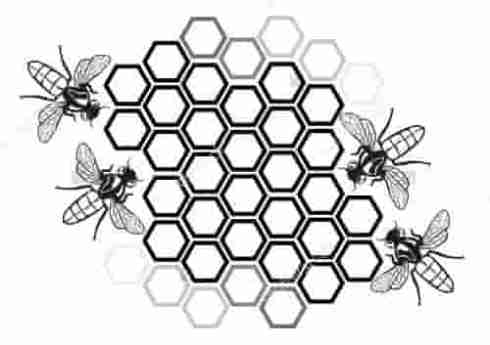
The spiritual symbol of number 6 is the hexagram. This is also a sacred Jewish symbol.
The upward-pointing triangle represents the active masculine aspect of men, while the downward-pointing triangle symbolizes the passive feminine nature of women.
Thus, the hexagram symbol means harmony between the 2 sexes. It also represents the esoteric doctrine of “As above, so below”, which is the spiritual law of “we shall reap what we sow”.
This explains why the 6th commandment in the Bible is “thou shall not kill” because the principle of number 6 is the law of procreation and karma.
Presiding deity of number 6 is Venus. Attributes are – Artistic, sensuous, romantic, creative, inventive, friendly, organized, tactful, manipulative, soft spoken, gentle.
Lucky Seven
If you are buying a house of plot of land – the first choice for most people is # 7. Most parts of the world # 7 is considered a lucky number.
There are 7 continents and the Rainbow is made up of 7 colours. In Judaism, there are seven heavens. The Koran, also speaks of seven heavens, and Muslims making the pilgrimage to Mecca walk around the Kaaba seven times. Hindu marriages are solemnised by walking around the fire seven times. Ancient beliefs from around the world believed that the seventh son of the seventh son would be gifted with magical powers (both good and evil).The neutral pH value between acidity & alkalinity is 7. The 7 year itch – most people tend to change their jobs or life partners after 7 years. Statistics show that on an average, couples divorce in about 7 years of marriage.
There are 7 Chakras (energy centres) in the human body. The Sapta Rishis spread the knowledge across the globe. Sapta Matrika are the 7 Goddesses. Sapta Dhatu – 7 elements that form the foundation for nourishment in life. Hindus also believe that there are 7 holy seas and seven holy rivers. traditional Indian music, musical notes are called svaras and commonly represented using the seven notes – Sa, Re, Ga, Ma, Pa, Dha and Ni.
But in countries that came under Chinese influence such as Thailand and Vietnam, number 7 is an unlucky number. It’s because it represents the month of July, which is the time people pay respect to their dead relatives. People in these countries offer food items and various fruits in the hope that the dead won’t haunt them.
September, October and December are named after the Sanskrit / Roman numbers seven, eight and ten respectively. July and August used to be named Quintilis and Sextilis, meaning fifth and sixth month, before they were renamed after Julius Caesar and and his heir, Augustus. The reordering of the roman calendar pushed back Sep & November by 2 months and they no longer represent the 7th and 9th months.
The ruling deity for Number 7 is Ketu (Neptune). Traits associated with this number are indecisive, disruptive, social, artistic, Intuitive, mystical, religious, insightful, creative, dreamy, nature loving, romantic, sentimental.
Number Eight
Many religions around the world, including Hinduism, Buddhism, Judaism, Christianity, Islam and Taoism consider 8 an auspicious number. Chinese people are particularly fond of the number 8. The number translates to bā, which sounds like the Chinese word fā, which means to generate wealth.
The association of the number 8 with wealth is very strong in China. So much so that they consider properties with the number 8 in the address as highly valuable possessions. Here’s another solid example – the August 2008 Summer Olympics held in Beijing officially started at 08:08:08 local time.
In Japan, they also consider the number 8 as lucky, and they call it ya or Hachi. The association with luck is in the formation of the word in Japanese characters, which gives off the idea of getting wealthy because the shape of the letter – 八- gradually broadens.
Ashtami is the highest point of celebration during the Durga Puja Festival. It is believed that on this day Goddess Durga killed Mahishasura. Lord Krishna’s birth is celebrated and observed on the eighth day (Ashtami) of the dark fortnight (Krishna Paksha) in Shravana Masa. His consort Radha’s birth is celebrated in Barsana and the entire Braj region also on an ashtami. Radha Ashtami comes fifteen days after Krishna Janmashtami.
The number eight is a Fibonacci number. The sixth number in the Fibonacci sequence, eight, is the only number in this sequence (other than the number one) that is a perfect cube (2³).The amount of clouds in the sky is calculated in oktas, ranging from zero oktas to eight oktas. So, for example, on a day with zero oktas, the sky is completely clear of clouds, while a six okta day would be mostly cloudy.
Saturn is the reigning deity of number 8. Traits associated with it are introverted, lonely, thoughtful, wise, depressive, strong willed, caring, protective, radical, laborious, subservient, suffering, striving. People with this number are disciplined and hard working but life is a struggle as they never get the appreciation for the effort they put. They are strong people with a keen sense of right & strong and have the courage to stand up for what is right.
Number 8 is the symbol of Infinity. It has perfect symmetry. It is both spiritual and materialistic. It is a number that comes blessed with positive energy, the power of transitions, and the possibility of infinite abundance.
Only 3 numbers – 0, 3 & 8 have lines of symmetry.
- 0 has 2 lines of symmetry 1 horizontal and 1 vertical.
- 3 has one horizontal line of symmetry if we draw the top and bottom both equal size.
- 8 has two symmetry lines, vertical and horizontal.
Number Nine
This number is so fascinating we can write and entire book in its magical powers.
They say that the universe begins with zero and ends with 9 because after 9 the numbers just repeat themselves in two digits. So, 9 is also seen as a complete number. This is evident from the fact that any number that is multiplied with 9 and reduced to a single digit always becomes 9. (For example, 9 times 3 is 27 and if you add 2+7, it will give you 9 – Try this with any number).
In Pythagorean numerology the number 9 symbolises the end of one cycle and the beginning of another.
The number 108 (1+8 = 9; 12 times 9 is 108) is considered very holy in Hinduism, Buddhism and across a range of religions and cultures. 108 times is used in many spiritual chants in different religions to mark the completion of prayer.
There are 18 chapters (1+8 = 9) in the entire Mahabharata as well as in the Bhagavad Gita, the sacred epic and scripture. The battle of Kurukshetra in the Mahabharata went on for 18 days. There are 18 Puranas and 108 Upanishads, which again are associated with 9.
The human body has 9 doors – two eyes, two ears, two nostrils, the mouth and the openings for excretion and procreation. Even the shape of the womb is in the form of 9. Perhaps it is no surprise that it takes 9 months for a human being to give birth to a child.
In Vedic culture, the number 9 finds a place of spiritual significance. There are 9 planets in Vedic astrology that are said to govern an individual’s life based on his/her actions (karma). These 9 planets are: Mars, Venus, Jupiter, Mercury, Saturn, Sun, Moon, Rahu (Northern lunar node), Ketu (Southern lunar node). There are 9 gems or Navaratnas that are associated with each of these planets: Pearl (for Moon), Ruby (for Sun), Blue Sapphire (for Saturn), Yellow Sapphire (for Jupiter), Red coral (for Mars), Emerald (for Mercury), Diamond (for Venus), Gomed or Hessonite (for Rahu) and Cat’s eye or Chrysoberyl (for Ketu).
We celebrate 9 days of Navaratri to mark the victory of Goddess Shakti over evil. There are 9 emotions (bhavas or rasas) in Indian classical dance known as the ‘Navarasas’: Shringara (love and beauty), Hasya (laughter), Karuna (compassion), Raudra (anger), Veera (courage), Bhayanaka (fear), Bibhatsya (disgust), Adbutha (surprise), and Shantha (tranquility)
There are 9 forms of devotion to God or our Supreme Self (Paramatma) – Shravan (hearing); Kirtan (praying); Smaran (remembering); Padasevan (resorting to feet); Archan (worship); Namaskar (bowing); Dasya (service); Sakhyam (friendship); Atma-Nivedana (surrender of the self).
The nine Muses in Greek mythology are Calliope (epic poetry), Clio (history), Erato (erotic poetry), Euterpe (lyric poetry), Melpomene (tragedy), Polyhymnia (song), Terpsichore (dance), Thalia (comedy), and Urania (astronomy).
El Castillo, the Mayan step-pyramid in Chichen Itza, consists of nine steps. It is said that this was done to represent the nine levels of Xibalba.
In Christianity the number 9 also represents the fruits of God’s Holy Spirit. These fruits are faithfulness, gentleness, goodness, joy, kindness, long suffering, love, peace and self-control (Galatians 5:22 – 23).
The famous Ayyappa Temple in Sabarimala, Kerala has 18 steps as the last finale to the shrine ( 1 + 8 = 9)
- Speed of light = 186282 miles/sec = 1 + 8 + 6 + 2 + 8 + 2 = 27 = 2 + 7 = 9
- Diameter of the Sun = 864000 miles = 8 + 6 + 4 + 0 + 0 + 0= 18 = 1 + 8 = 9
- Diameter of the Moon = 2160 miles = 2 + 1 + 6 + 0 = 9
- Diameter of the Earth = 7920 miles = 7 + 9 + 2 + 0 = 18 = 1 + 8 = 9
- Second in a hour = 3600 = 3 + 6 =9
- Second in a day = 86400 = 8 + 6 + 4 =18 = 1 + 8 =9
- Second in a month = 2592000 = 2 + 5 + 9 + 2 = 18 = 1 + 8 = 9
- Second in a year = 31104000 = 3 + 1 + 1 + 0 + 4 = 9
- Even the universe vibrates at a frequency of 432 Hz = 4 + 3 + 2 = 9.
- There are 27 Nakshatras or stars 2 + 7 = 9
The importance of the number 108 can be seen repetitively in astronomy and astrology : 1 + 8 = 9
- In Vedic astrology there are 12 solar houses and 9 lunar houses, 9 x 12 = 108
- The diameter of the sun is about 108 times that of the diameter of Earth.
- The average distance between the Earth and the Sun is 108 times the sun’s diameter.
- The average distance from the Earth to the Moon is 238,800 miles, about 108 times the moons diameter. This makes the moon appear the same size as the sun during eclipses.
To quote Manoj Chalam a scientist from Cornell University , “the ratio of 108 may be the key to finding planets hospitable to life outside of our solar system, just look toward this same size and distance relationship,” 108 is key to our being.
Nine is so popular that there are many Idioms also based on this number
- “to go the whole nine yards-“
- “A cat-o’-nine-tails suggests perfect punishment and atonement.” – Robert Ripley.
- “A cat has nine lives”
- “to be on cloud nine”
- “A stitch in time saves nine”
The sound of the number 9 in Japan is very similar to the Japanese term for ”torture.” It’s avoided because it is considered an unlucky number. Airlines and hospitals in Japan avoid the number for this reason.
Mars is the ruling deity of number 9. Attributes associated with this number are warlike, egoistic, short tempered, violent, hard outside but soft inside, dominating, aggressive, strong, rough, fighting, alienating, strong leadership.

Circa 300 BCE, as part of the Brahmi numerals, Indians wrote a digit 9 similar in shape to the modern Q mark without the bottom dot. The Kshatrapa, Andhra and Gupta started curving the bottom vertical line coming up with a 3-look-alike. The Nagari continued the bottom stroke to make a circle and enclose the 3-look-alike, in much the same way that the sign @ encircles a lowercase a. As time went on, the enclosing circle became bigger and its line continued beyond the circle downwards, as the 3-look-alike became smaller. Soon, all that was left of the 3-look-alike was a squiggle. The Arabs simply connected that squiggle to the downward stroke at the middle and subsequent European change was purely cosmetic
In Conclusion
Is Numerology a predictable science – Clearly NO. But almost everyone is fascinated by numbers and have preferences. We also strongly avoid some numbers (Eg 8 & 4 are in a state of perpetual clash). Beliefs with numbers also vary by culture and countries, in todays global era marketeers need to be mindful of the impact their messaging may create.
ReferenceInformation compiled from the following sources
https://science.howstuffworks.com/science-vs-myth/extrasensory-perceptions/numerology.htm
https://www.speakingtree.in/allslides/significance-of-zero
https://www.hinduwebsite.com/hinduism/h_numerology.asp
https://www.britannica.com/topic/number-symbolism/Pythagoreanism
https://www.sentinelassam.com/editorial/the-magic-number-9-and-the-universe-579784
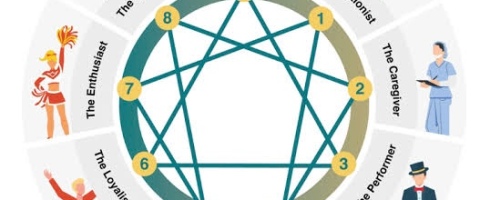
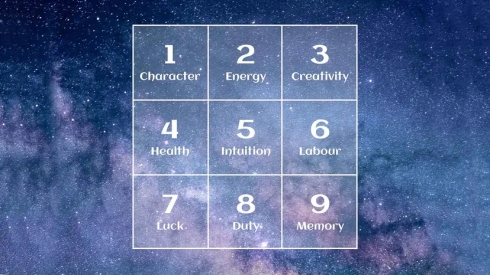
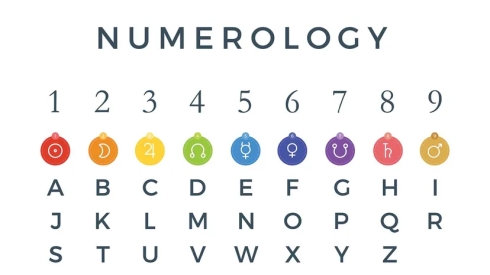
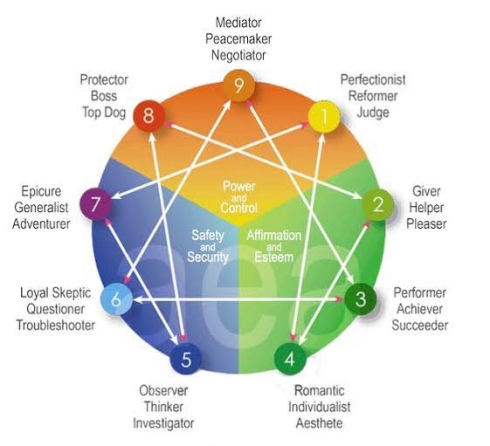

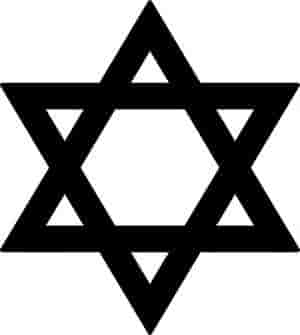

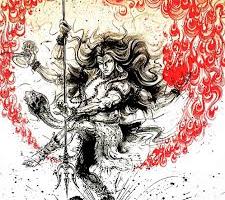
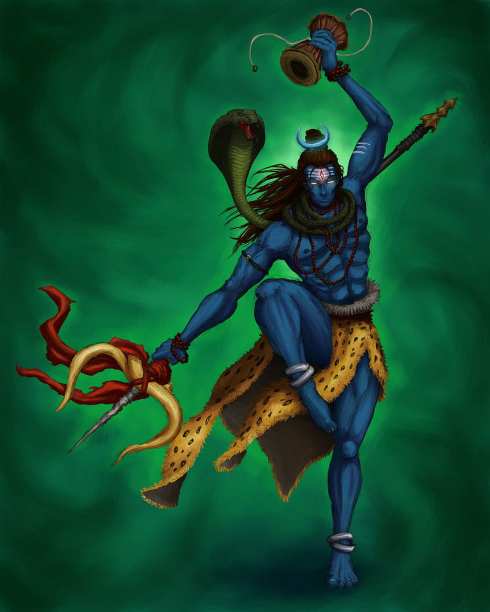
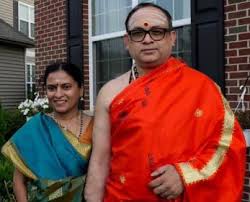
Recent Comments